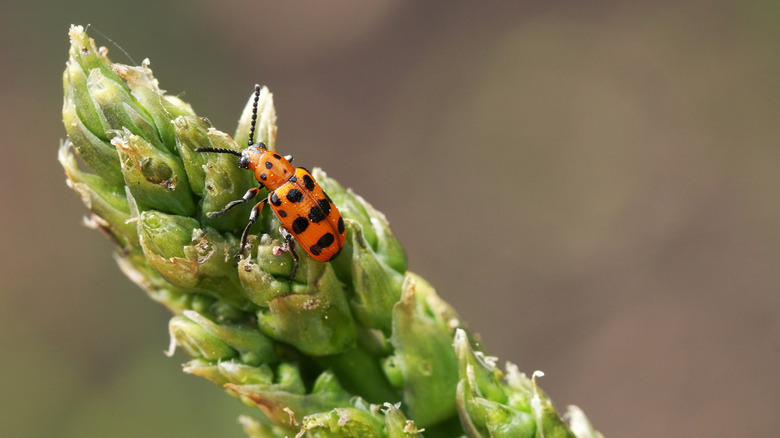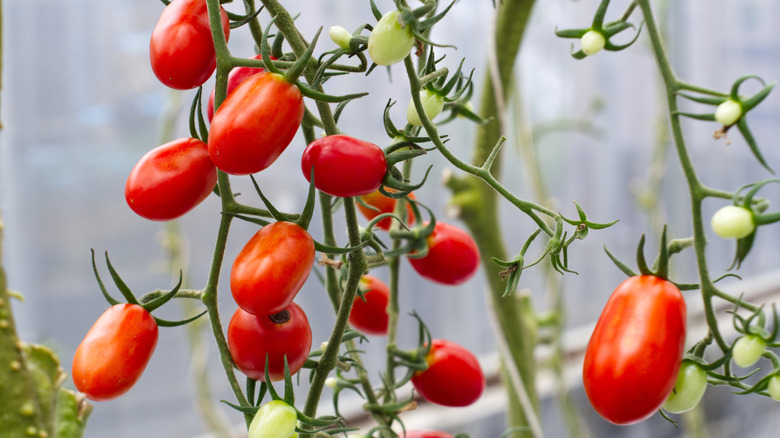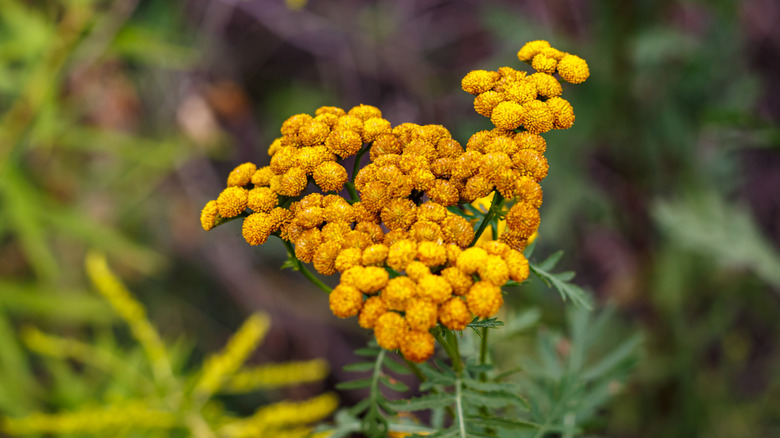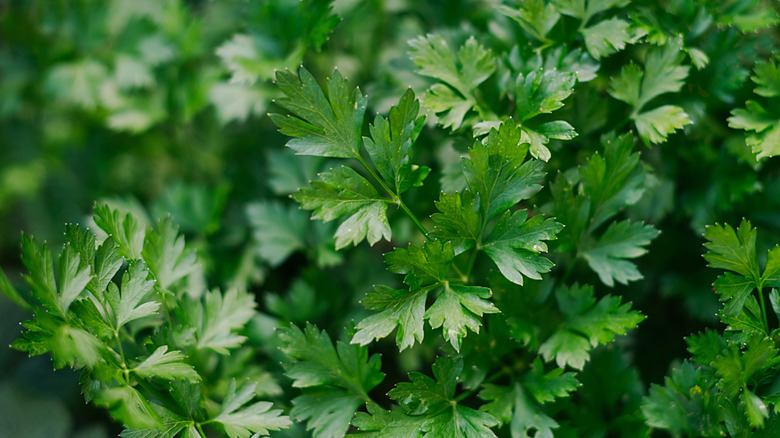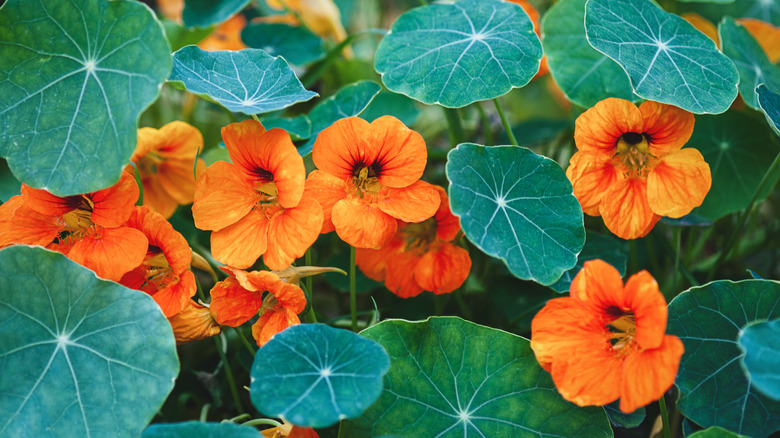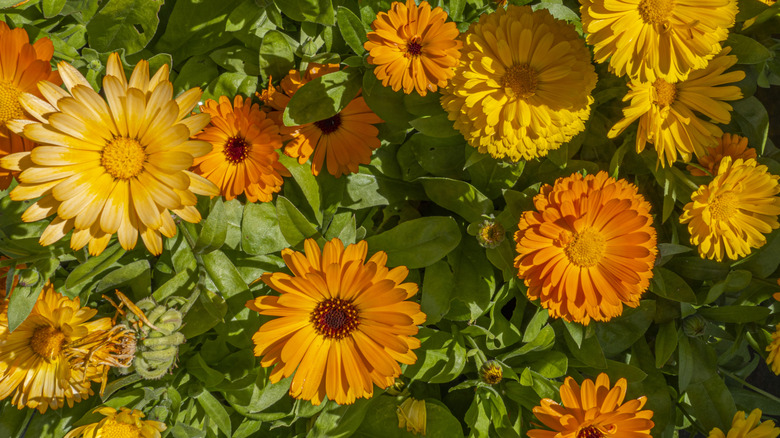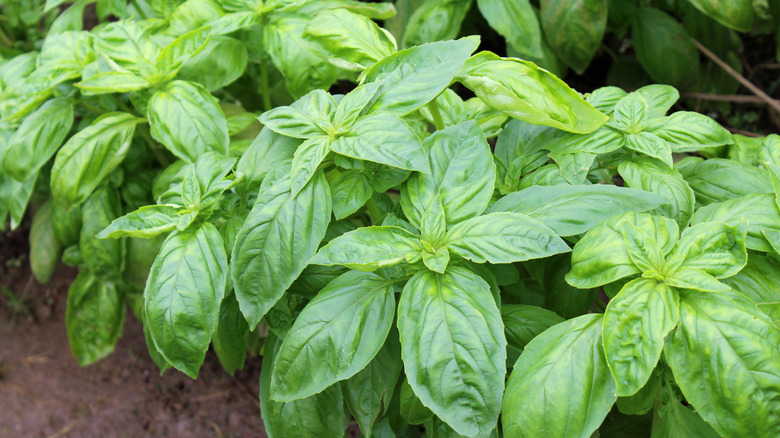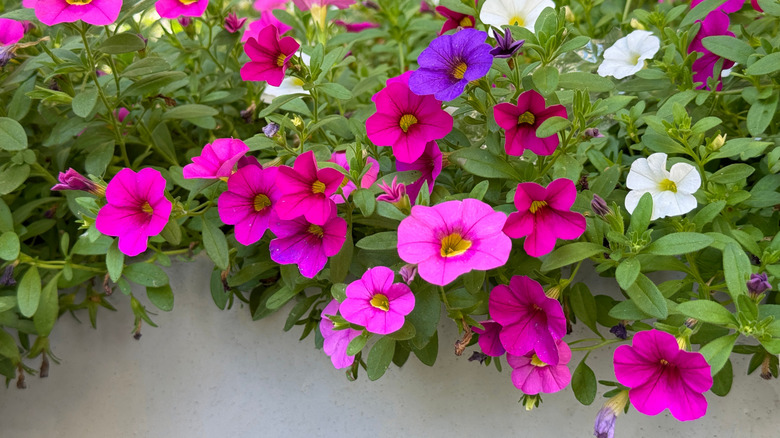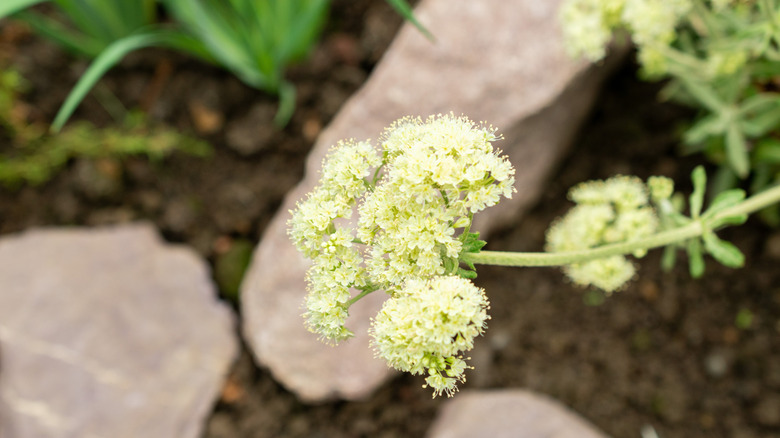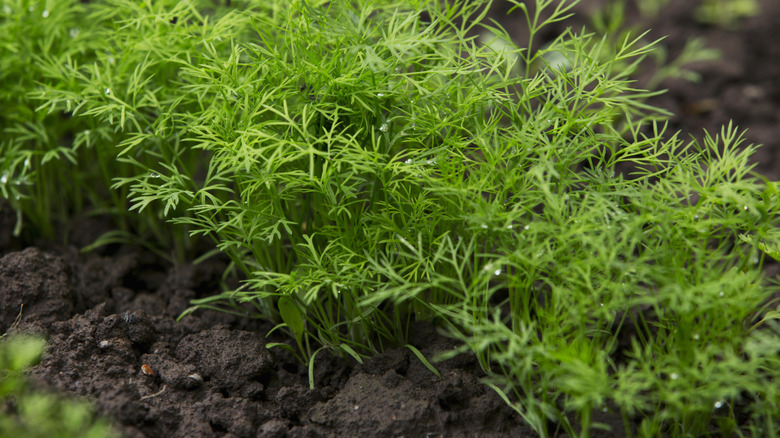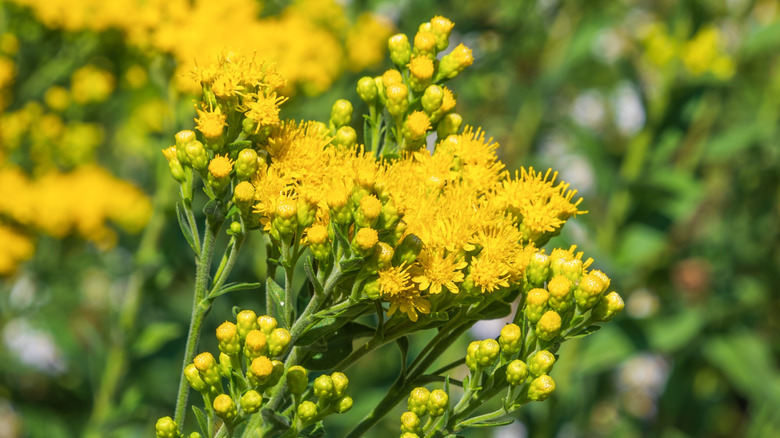The Best Companion Plants That Will Help Keep Asparagus Beetles Out Of Your Garden
Asparagus is the type of plant that just keeps on giving. With proper care, the plants can last up to 15 years or even longer. But when you have something growing in the same spot for so long, it is bound to attract some visitors, like asparagus beetles. And the worst thing about asparagus beetles is that they exclusively feed on asparagus, eating shoots, leaves, and sometimes even bud tips. It is just one of those issues you should know about before growing asparagus. Their activity can reduce crop yields and, in commercial settings, lead to significant financial losses. So, how do you keep them out of your garden?
Fortunately, there are some companion plants that either deter the asparagus beetles with their pungent aroma or attract beneficial insects to the garden, which are predators of the mature asparagus beetles or their larvae. Examples include basil, nasturtium, tansy, calendula, tomato, and parsley. However, keep in mind that relying on companion plants alone won't completely keep asparagus beetles out of your garden, and you will need to combine them with cultural and sometimes chemical approaches to get the desired results.
Tomato
Tomato (Solanum lycopersicum) seems like an odd choice to keep pests out of the garden, right? After all, they have plenty of pests of their own. But tomato plants repel asparagus beetles, and they go wonderfully with asparagus as companion plants. That is because asparagus repels nematodes, which are a common pest of tomatoes. In other words, they are both mutually beneficial to each other. Nevertheless, the reason why tomatoes can repel asparagus beetles is because they synthesize a chemical known as solanine, which has pesticidal properties. Just make sure you plant them both in a sunny spot.
Tansy
A fragrant perennial with feathery foliage and cheerful yellow flowers, tansy (Tanacetum vulgare) is not a plant that you will come across often, but it can be found in herb gardens because of its use in herbal medicine and potpourri. Its tissues contain essential oils that give off a strong scent and deter pests, including asparagus beetles. However, the problem with tansy is that it has a habit of spreading. Plant it in pots or a little away from your desired plants and scatter fresh tansy clippings around the base of your plants to deter pests.
Parsley
Parsley (Petroselinum crispum) can be a wonderful addition to just about any garden, especially when planted with other herbaceous plants or in borders. If you are looking for a companion plant to keep asparagus beetles out of your garden, parsley can get the job done. That's because its tissues, just like tansy, contain essential oils with insect-repelling chemical compounds. Just make sure to plant it before the asparagus begins to send up new spears. Other than that, you don't have to worry about a thing. Parsley is easy to grow and grows in even the most nutrient-poor soils.
Nasturtium
Nasturtium (Tropaeolum) is another great choice of companion plants for asparagus if you are looking for something that grows well in poor soils. It is easy to grow and produces big, bright, and beautiful flowers. It gets its insect repellent properties from a chemical compound in its tissues called glucosinolates. Additionally, nasturtiums attract beneficial insects such as parasitic wasps, which are one of the most important predators of asparagus beetles and can help keep their numbers in check. Just make sure that you plant them in soil that is well-drained and not too fertile.
Calendula
A member of the daisy family, calendula (Calendula officinalis) is loved for its versatility and beautiful, bright flowers. It is often planted as a companion plant around tomatoes and potatoes to help deter insect pests and protect nearby crops. You can use it to keep asparagus beetles at bay as well. It's easy to grow, but for it to thrive, the soil must be fertile and well-drained. Also, if you want, you can grow it from seeds, but if you want earlier blooms, start them indoors about six to eight weeks before the last frost.
Basil
Few herbs have earned the kind of fame basil (Ocimum basilicum) has, and even fewer can match its range of uses. Its use as a companion plant is also no secret. With its bold, pungent aroma, basil acts as a natural insect repellent, driving away pests such as asparagus beetles. And, keeping pests away is just one of the reasons you'll want to add basil to your garden. Basil also attracts a ton of pollinators, which is a good thing if you are looking to harvest seeds from your asparagus plants instead of harvesting their spears as food.
Petunia
Petunias (Petunia x hybrida) are a summer favorite, famous for their bright colors and endless variety. There are literally hundreds of varieties to choose from, and you can choose the ones you like to keep the asparagus beetles away from your garden. This ability to keep pests away comes from the release of alkaloid substances that petunias naturally produce. For best results, plant them in borders around your asparagus plants. They are fast growers and have extraordinary drought and heat tolerance, which makes them a particularly good choice for growers or asparagus in warmer areas.
Parsnip
Parsnip (Pastinaca sativa) is a tough, cool-weather crop that is grown for its long, creamy-white root, which kind of looks like a pale cousin of the carrot. Nevertheless, members of the carrot family are very excellent hosts of parasitic wasps, including parsnip. The wasp itself feeds on pollen, but it lays its larvae on beetle eggs and larvae. When present in good numbers, their activity can kill up to 70% of the asparagus beetle eggs in your garden. However, when planting parsnips, do not choose the wild variety. It contains furocoumarins, which can cause a sunburn-like rash known as phytophotodermatitis.
Dill
Another member of the carrot family, dill (Anethum graveolens), is a popular garden herb with its sweet, tangy aroma. In the garden, dill can draw in the good guys, such as ladybugs and lacewings. Both of these insects are predators of asparagus beetles and can help keep their numbers in check organically. If you want to plant dill in your garden, make sure the soil is slightly acidic and well-drained. They can be easily grown from the seed, and for the best results, you should sow the seeds in spring after the danger of frost has passed.
Goldenrod
Last on the list is goldenrod (Solidago), a tough and forgiving plant that is remarkably easygoing, managing to grow even in poor soil, clay, and drought. It harbors populations of assassin bugs, a natural predator of the asparagus beetle. Planting it with your asparagus plants may keep these pests away from your garden. Just make sure that your garden gets plenty of sun and has well-drained soil. Also, keep an eye out for powdery mildew, which can be a problem, especially if he soil is moist or damp, as well as its aggressive growth habit.
